As an Amazon Associate I earn from qualifying purchases.
One of the great delights of working with a large animal is that you can get cuts off it you cannot with a smaller one. The flat iron steak cut is one of my favorite treats from larger animals.
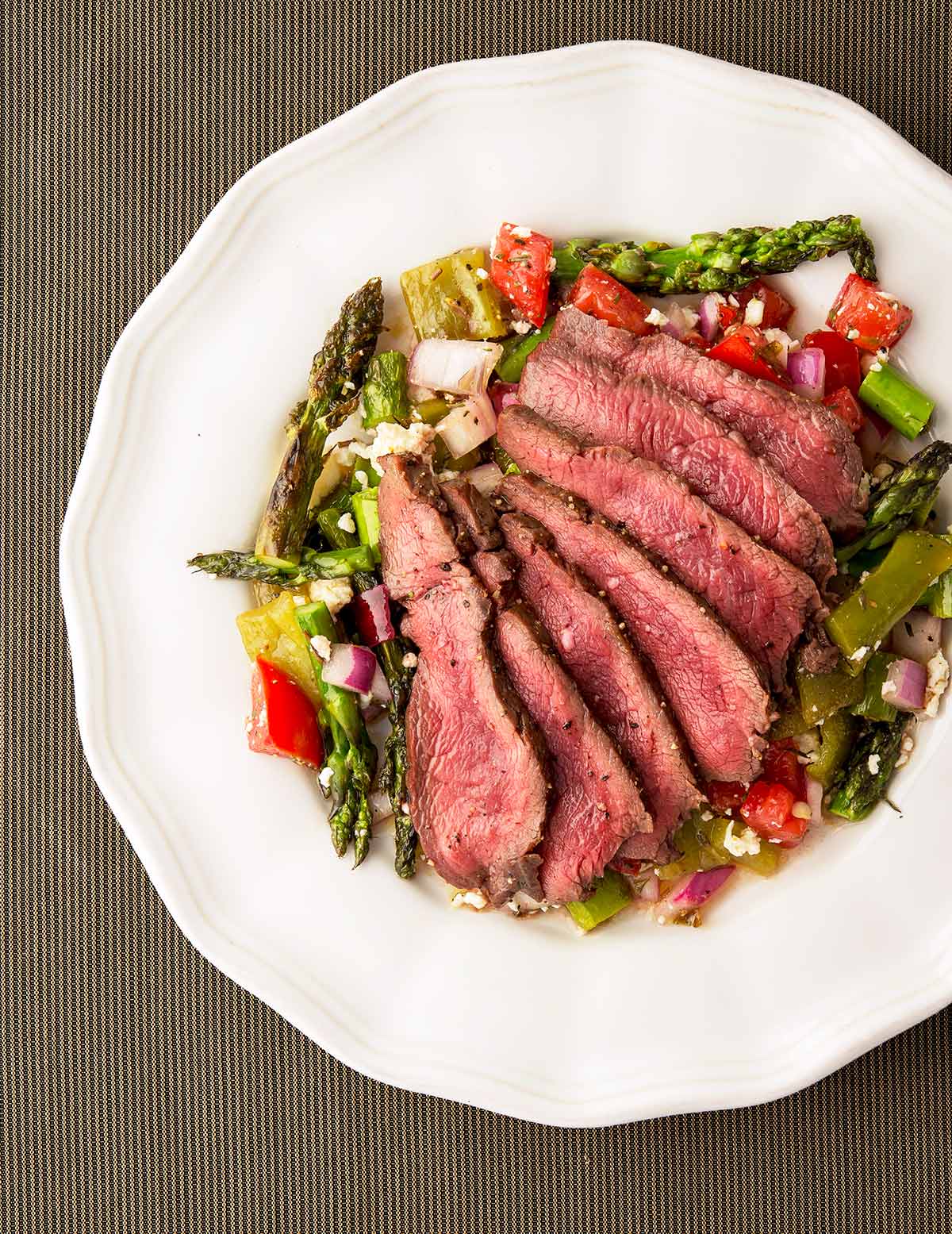
The flat iron steak cut comes from the shoulder, and most deer and all pronghorn are simply too small to make it worth it. But when you have elk, moose, bison, nilgai or caribou, you’re in business. And of course, these instructions on how to cut a flat iron steak work with beef, too.
Flat iron steaks, if you have been living under a rock — or just don’t eat in restaurants — are super trendy. They are sinew-free and super tender. Why so trendy? Because the shoulder is a working muscle, and working muscles have more flavor.
I hear the tenderloin partisans hollering. Yeah, I like tenderloin, too, but it has very little flavor compared to the rest of the animal. I’ll take a hanger steak, skirt steak or ribeye over a tenderloin any day. Same goes for the flat iron steak cut.
This steak has many names. In Britain it is called the butler’s steak, the paleron on France, the oyster steak in Australia. According to the beef mavens, it is indeed almost as tender as the tenderloin, but with way more flavor — again, because it comes from a hard-working muscle.
You can’t really cut a flat iron steak from a deer or lamb because they are just too small, with rare exceptions. You need an animal at least 400 pounds, in my opinion, to make it worth your effort. So cattle, caribou, elk and moose are what you are looking for.
Getting the Flat Iron Steak Cut
Here’s how to go about it.
First thing to remember is that the flat iron steak comes from the shoulder. Second, that it is a component of a blade roast. The blade roast comes from, yeah, you guessed it, the shoulder blade. Specifically the wide part of the paddle.
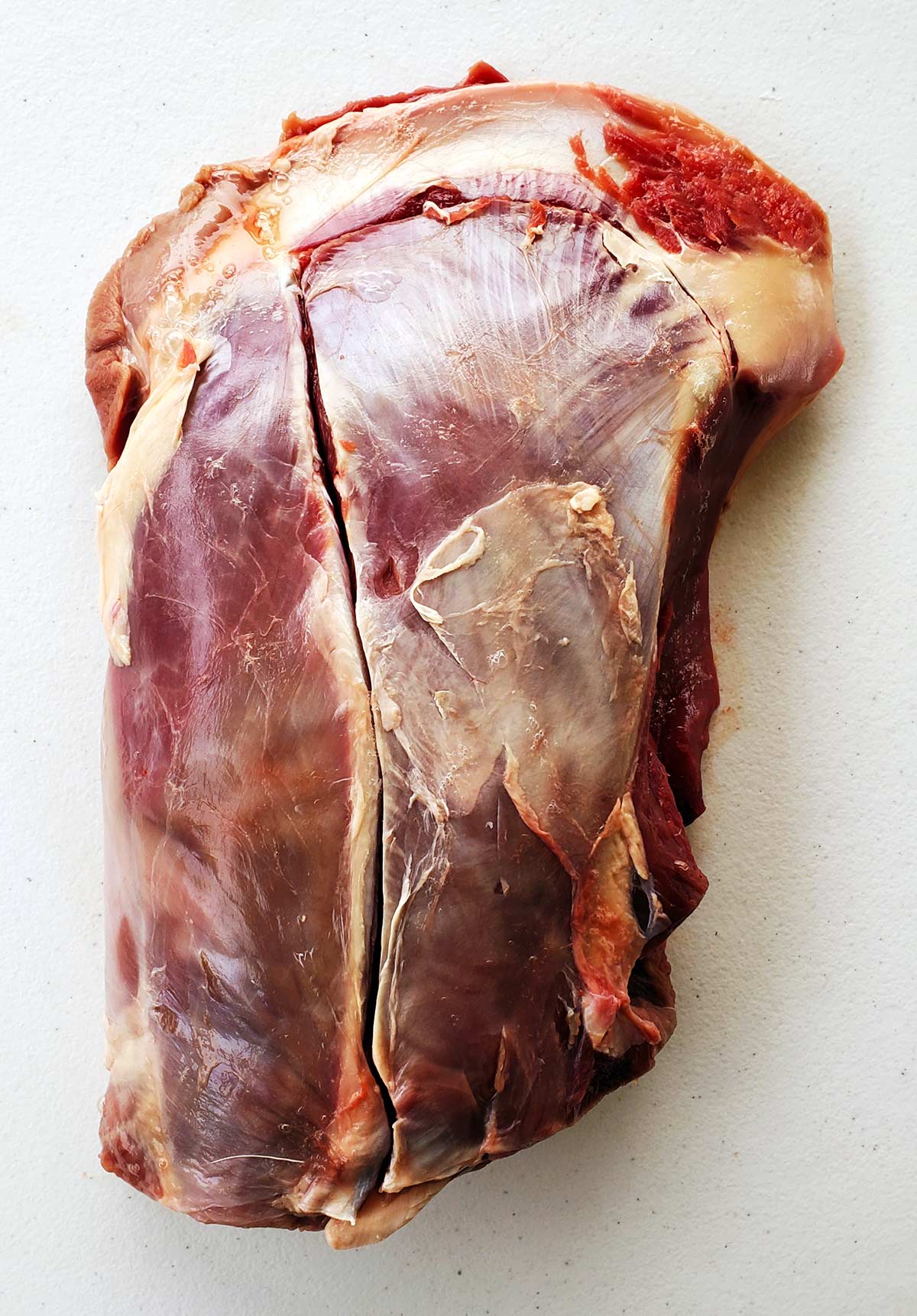
Work your way through an elk or moose shoulder until you see this muscle. Fillet it off the scapula (shoulder blade) in one piece. Looks lovely, yeah?
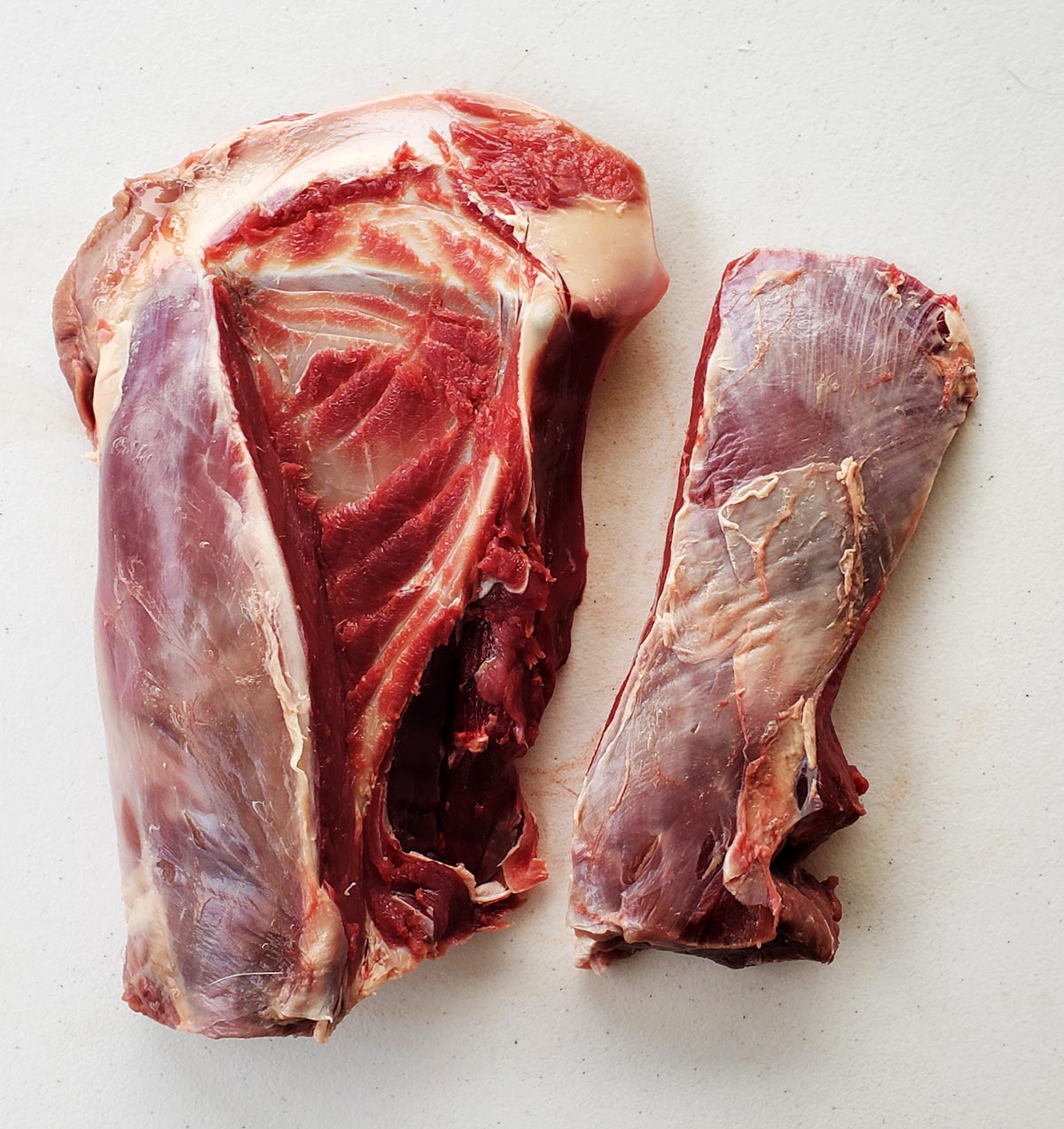
Sadly, it looks better than it is. You see, there is a gnarly line of sinew and cartilage running right down the middle of this roast. It’s so tough it will defeat your steak knife. It has to go.
You do this by starting at the narrow end of the roast, where you can see the cartilage at its thickest.
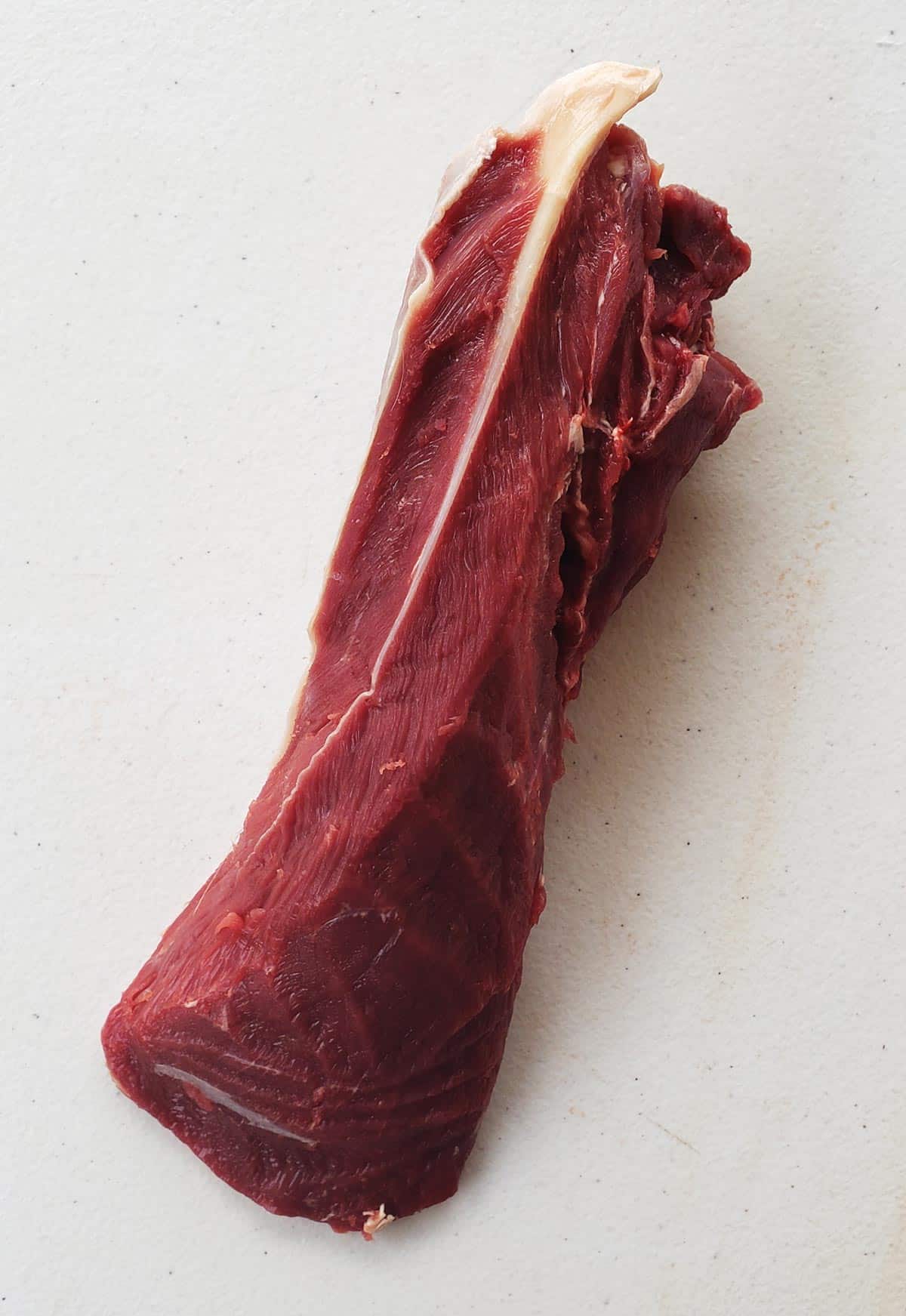
Take a very thin, flexible boning knife (or fish fillet knife) and start sweeping it along this line of cartilage. Take your time and keep the knife as close to this line as possible. An expert misses no meat, but as I don’t shoot elk every year, I am not quite as good as someone who does this for a living. Still, it’s not hard to do. (If you’ve ever filleted a skate wing, this is very similar.)
Once you have the top steak off, the second steak is easier. You flip the roast over so the cartilage is on the bottom, and remove it exactly the way you would the skin of a fish; this is why I use a fish fillet knife to cut my flat iron steaks.
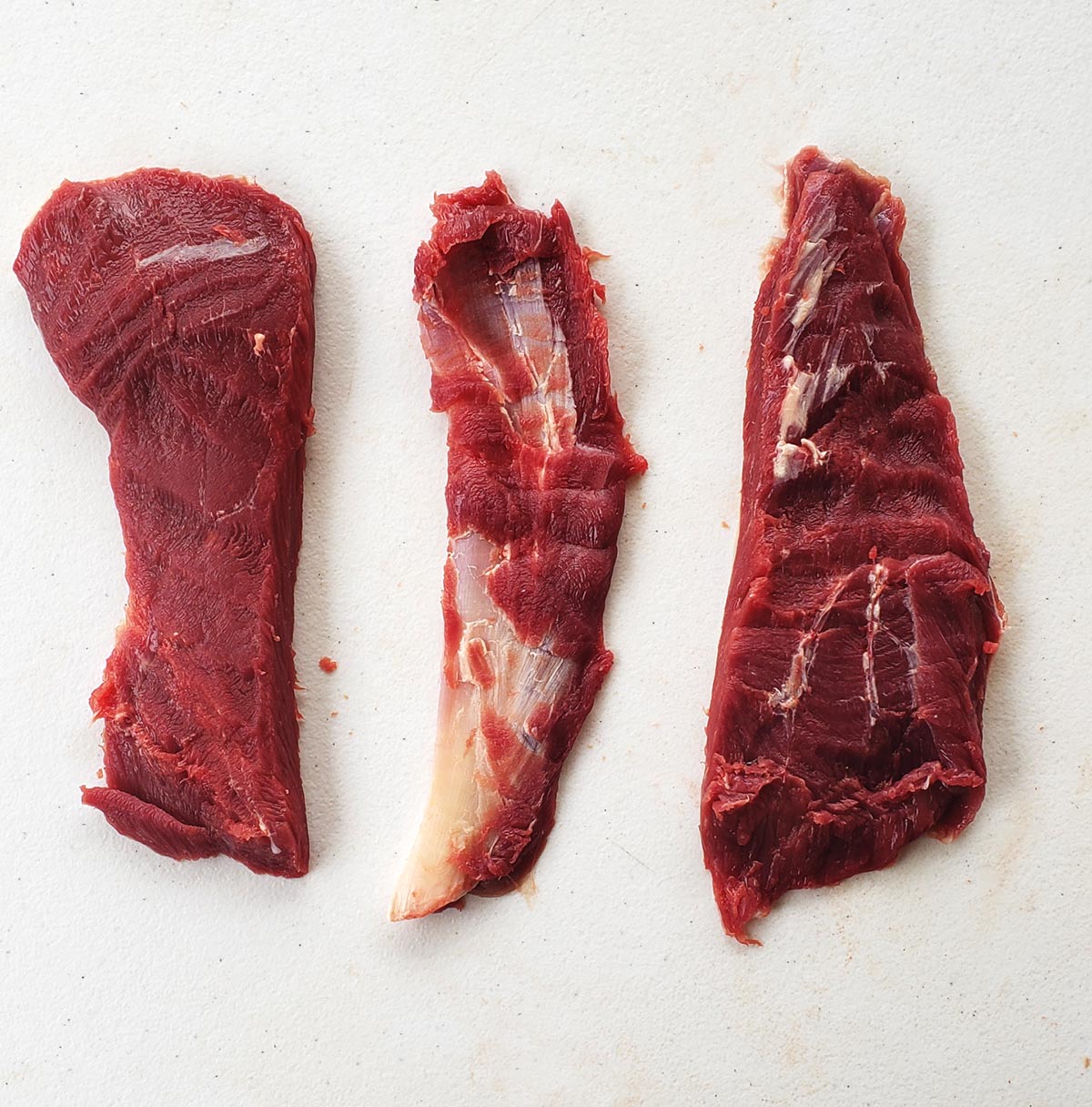
Now you have two sinew-free steaks, one larger than the other. All you need to do to finish the flat iron steak cut is to square it off. The yield on my cow elk was two one-pound steaks, and two closer to a half-pound.
Mine are a little choppy in the cutting. Once you do a few, your cuts will get smoother. Simply trim them up nice to get them ready to sear or for the grill. As for the center sinew, that goes in the pot for venison stock.
When it comes time to cook your flat iron steaks, you’ll notice a strong grain in the meat, which is great: After you grill or sauté this steak, you slice against the grain and will have yourself a piece of my favorite steak on the whole animal. Enjoy!
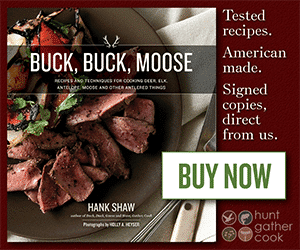



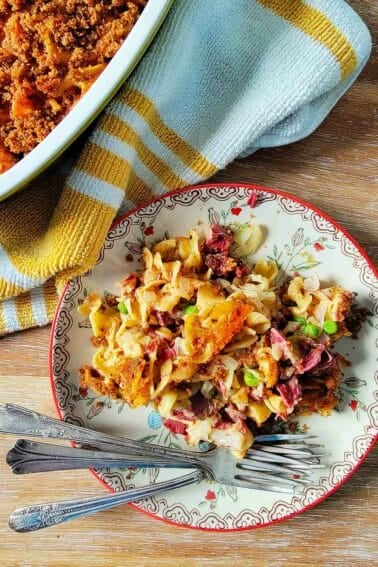
Thank you! Wow! I usually reserve shoulder for the slow cooker. I would not have believed these steaks would be so tender and tasty. Well I know now, and have a great summer option for the shoulder. So, so good! We made this with Sambar deer (plenty of meat) and laid it across a light mustard vinaigrette salad.
Many thanks for info on flatiron steak. Am female in 90’s and have Oyster blade waiting for me. Understand your instruction,. have knife sharpened for tomorrow, hoping for more energy. Thanks very much;
This was an outstanding steak! I’m never grinding that cut up again.
This article motivated me try it on a whitetail just to see. Got about a 3/4 of a pound of cleaned meat off each shoulder of a 110 pound doe. Used one side for tartar, which was amazing both flavor wise and texturally ( we have done back strap carpaccio but it was a little soft). The other side we used for carne asada tacos. So you don’t get a satisfying steak house steak but you do get some extremely tender venison for your more esoteric preparations without cutting into your loin and tenderloin supply! Thanks for the info!
Excellent description on how to filet those flat iron steaks.
I live and hunt in Alaska and with moose my favorite cuts are
shank sections for Osso Buco and flat iron steak fillets from the scapula.
My wife bought me your book and I have enjoyed it so much. You have so many Ideas on how to cook your game. I have used your recipes so many times that I just wanted to say, keep up your great work on presenting your readers with so many ideas on outdoor enjoyment.
I’ve fileted them off the blade before just trying to keep all the sinew out of my meat for grinding…didn’t know that I was making flat iron steaks…lolz
Ah, thank you! Ever since preparing your fabulous venison shanks, I’ve been wondering what else I’ve been grinding up and missing out on. This would be one of those. Look forward to trying!
I love this cut for making venison fajita’s and that works well for normal sized deer. Just take those smaller steaks, season them up, sear and slice for fajita’s.
Hi Hank, love the site and your Buck, Buck, Moose book.
I have to disagree with this though — “You can’t really cut a flat iron steak from a deer or lamb because they are just too small.” — I just got one set (high power rifle exit wounds are no joke) off of the pronghorn I shot last week. Are they small? Yeah, after separating them they are about 4 oz each. Are they worth the effort? Absolutely. I’d rather have two (well, ok, four) flat irons than another pound or two of ground any day. Cheers.
E: I guess that’s a fair point. I don’t cut them from smaller animals because I prefer to braise that whole shoulder, often bone-in. Just a different way to enjoy the animal!
What kind of recipes do you like to use for the flatiron steaks? Do you cook them whole?
Sean: Yes, I cook them whole, or cut into two larger steaks. Sear hard on a grill until medium-rare. Pretty simple, really.
Thank you for this information. I’m new at this, but my sons get lots of venison and I need good recipes to learn how to cut and cook it.
I just love these kind of posts. I’m a newbie in the kitchen and I spend more time searching how to do a simple thing than actually cooking, LOL. Thank you for the post!
I really like your website. Lots of good recipes and excellent well presented means and methods. Coming from Newfoundland and Labrador there is a long history of hunting and gathering. Most people prepare and eat game like traditional beef and porkrecipes. I do charcuterie and people rave about it. It’s time consuming to a point but very rewarding. Your website has been a great help.mthank you.
Now I really regret that ive been slicing all my “flat irons” into jerky the past few years… Shouldve known that straight grain would be good sliced across too. Doh! Thanks for the tip!
I’ve just discovered your blog … MY HERO ! bravooooooooooo … 🙂
From Beef cattle, that piece of connective tissue you mention cooks into a rich, buttery piece of heaven when properly braised or roasted. This one of my favorite cuts of beef. I’m not terribly familiar with the same cut from game animals as I have spent the better part of the last 35 years as a butcher. Beef is easy and affordable. Game is hard to acquire and expensive.
Jeffersonian: This is a wild game website, where readers have easy access to elk, deer etc.
Bravo! Flat iron is my favorite grilling cut these days. My guess is elk flat iron is going to be delightful.
And the Paris Hilton jokes write themselves…
Curious why you say it doesn’t work well for a deer? I’ve been doing this with whitetails for a while and, while much smaller, still plenty easy and delicious. Honest question, wondering is I should be doing something else with that cut.
Dave: It’s just a size issue for me. It will work, but the steaks are too small IMHO.
BEAutiful! And these postsabout step by step butchering are super helpful, especially when you can connect the dots between restaurant descriptions and wild game cuts. Thanks!